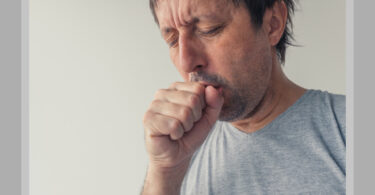1) The reliability of a symptom
The repertory is a tool developed to trace remedies starting from symptoms found in the patient. It is a ‘short cut’ to the materia medica.
By crossing several symptoms we can narrow the choices of possible remedies for a given case. After first making sure we use the right symptoms (homeopathic symptoms) in the repertorisation we then also often have to select which one of the proposed remedies is going to be homeopathic to the case. To make this choice a little easier, using homeopathy software, different ways of calculating the importance of a remedy in a repertorisation are proposed: sum of symptoms, taking or not in to account the degrees, select for small remedies, select for prevalence, Vithoulkas expert system, etc.
These systems will often take into account the degree with which the remedy is present in one rubric. It is tempting to use this graduation (degree of the remedy in the rubric) to determine which is the more likely remedy in the case when the repertorisation produces a list of possibilities but is this a reliable parameter to this effect?
We sometimes forget what the degree of a remedy really represents in the repertory and, further, this is not always exactly the same thing for different rubrics/remedies. In general we can say that the degree to which the remedy is raised in a rubric of the repertory has a relation to the degree of reliability that this symptom belongs to the pathogenesis of the remedy. This can be because the symptom was experienced with a more or lesser degree in provings of the remedy but can also mean that the symptom disappeared in a patient after using the remedy (clinical confirmation) and it can even be a toxicology symptom. These three qualities are not exactly of a similar nature but we can safely agree that they all relate to the degree (reliability) of the presence of a symptom in the pathogenesis of a remedy.
The question now is: is the degree of the presence of a symptom in the pathogenesis of a remedy a good reference for an indication of this remedy in the patient?
The answer is that this is so for certain symptoms but not for others.
2) Specificity against reliability in the relation between a symptom and the remedy
The pathogenesis is not there to offer direct indications for a remedy. The pathogenesis is the material that needs to be studied to learn about remedies. Within the pathogenesis, we have to look for what is peculiar, what are the trends and what gives away the dynamic of the remedy. Once this dynamic is found and confirmed and tested through cases, a remedy picture can be constructed that should give rise to a remedy nucleus.
When the refined nucleus of a remedy is known with satisfying certainty (confirmed in the clinic) we can then check and see what symptoms in the materia medica are most closely related to the remedy’s nucleus and what symptoms are less related or in other words: which symptoms are typical for the remedy and which ones are more or less common.
This would give rise to a second kind of classification of remedies in rubrics: this classification would indicate the degree of specificity of a symptom in relation to the remedy’s nucleus. This qualification and its level will be much more reliable to determine whether a remedy will be appropriate in a case after good case taking, good symptom selection and repertorisation.
Sometimes remedies will have the same high degrees for both qualities; presence in the materia medica and specificity of the symptom with regards to its nucleus, in other cases there can be an important difference. It is not uncommon to find 1st degrees to be very specific to the remedy nucleus.
This concept was explained to me by Dr. Marc Brunson from Belgium. Others have proposed similar ideas (see publication by J Sherr in this edition).
It would be a great progress if this information finds its way into our repertories but I can see a first hurdle coming up and that is a harmonisation of the concept of the nucleus of a remedy. From the cured cases published in various places one can see that the interpretation of homeopathic cure, which is essential to build remedy pictures, is not treated with the same diligence by different authors.
For the moment we have to rely on the degrees present in the repertory and never forget that they do not necessarily relate to the dynamics of a remedy. They should attract our eye to one or more remedies but ultimately it will be knowledge of remedies, weight of symptoms in the case and other variables that will help in building the case to select one or another remedy.
3) Renowned activity
One pitfall of the degree system is that it can (and does) lead to prescription reflexes based on renowned action of a remedy. As I explained earlier, some of the information that leads to the ranking of remedies in rubrics is the observation of cured symptoms through the use of a remedy. Some remedies are reasonably reliable in eliminating certain symptoms in patients making their use popular in cases where the patient complains about such symptoms. This renowned activity of a remedy is often in direct relation to the degree of the remedy in a rubric.
When we use remedies for their renowned activity we are not really applying the homeopathic principles for remedy selection but more an empiric system which can be very much compared to herbal medicine. There is often a blurred line between homeopathic practice and herbal or other uses of substances (Bach flowers, micronutrition, oligotherapy, etc) when homeopathically prepared medicines are used for their renowned activity (i.e. silicea is good for eliminating splinters, hepar sulphur in treating abcesses, Belladonna in fever, Cuprum in convulsions, Arg nitr or Gels for stage fright).
When we use homeopathic prepared remedies based on this approach we always have to be aware that it can help the patient but that this help is often limited in comparison to what homeopathy really can achieve. The patient/client should always be made aware of this.





